My
List |
Addition Date
|
Target
|
Mission
|
Instrument
|
Size
|

|
1998-06-05 |
Mars
|
Viking
|
Visual Imaging Subsystem - Camera A
|
7170x4991x3 |
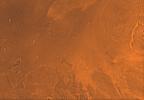
|
-
PIA00168:
-
MC-8 Amazonis Region
Full Resolution:
TIFF
(60.79 MB)
JPEG
(3.337 MB)
|

|
1998-06-04 |
Saturn
|
Voyager
|
|
860x1230x3 |

|
-
PIA00349:
-
Saturn and 4 Icy Moons, Enhanced Color
Full Resolution:
TIFF
(1.15 MB)
JPEG
(48.46 kB)
|

|
1998-06-04 |
Enceladus
|
Voyager
|
VG ISS - Narrow Angle
|
1004x1004x3 |
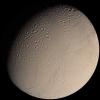
|
-
PIA00347:
-
Voyager 2 Color Image of Enceladus, Almost Full Disk
Full Resolution:
TIFF
(1.99 MB)
JPEG
(95.52 kB)
|

|
1998-06-04 |
Ida
|
Galileo
|
Solid-State Imaging
|
1563x915x3 |
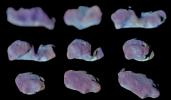
|
-
PIA00331:
-
Nine Galileo Views in Exaggerated Color of Main-Belt Asteroid Ida
Full Resolution:
TIFF
(1.713 MB)
JPEG
(76.92 kB)
|

|
1998-06-04 |
Ida
|
Galileo
|
Solid-State Imaging
|
1563x915x3 |
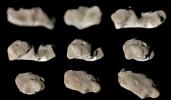
|
-
PIA00330:
-
Nine Galileo Views in Natural Color of Main-Belt Asteroid Ida
Full Resolution:
TIFF
(1.692 MB)
JPEG
(75.18 kB)
|

|
1998-06-04 |
Io
|
Voyager
|
|
2572x1286x3 |
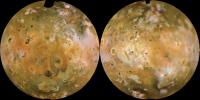
|
-
PIA00318:
-
Io Shown in Lambertian Equal Area Projection and in Approximately Natural Color
Full Resolution:
TIFF
(8.241 MB)
JPEG
(259.1 kB)
|

|
1998-06-04 |
Triton
|
Voyager
|
|
4500x3500x3 |
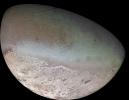
|
-
PIA00317:
-
Global Color Mosaic of Triton
Full Resolution:
TIFF
(29.1 MB)
JPEG
(2.06 MB)
|

|
1998-06-04 |
Mars
|
Viking
|
|
4511x4172x3 |
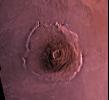
|
-
PIA00300:
-
Olympus Mons
Full Resolution:
TIFF
(41.13 MB)
JPEG
(2.08 MB)
|

|
1998-06-04 |
Mars
|
Viking
|
Visual Imaging Subsystem - Camera A
|
6994x5029x3 |
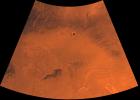
|
-
PIA00162:
-
MC-2 Diacria Region
Full Resolution:
TIFF
(43.55 MB)
JPEG
(2.043 MB)
|

|
1998-05-08 |
Io
|
Galileo
|
Solid-State Imaging
|
1927x619x3 |

|
-
PIA01400:
-
The Galilean Satellites
Full Resolution:
TIFF
(2.237 MB)
JPEG
(134.9 kB)
|

|
1998-05-08 |
Io
|
Galileo
|
Solid-State Imaging
|
1870x635x3 |

|
-
PIA01299:
-
The Galilean Satellites
Full Resolution:
TIFF
(2.132 MB)
JPEG
(156.4 kB)
|

|
1998-05-08 |
Callisto
|
Galileo
|
Solid-State Imaging
|
930x550x3 |
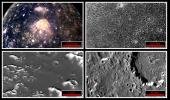
|
-
PIA01297:
-
View of Callisto at Increasing Resolutions
Full Resolution:
TIFF
(891.9 kB)
JPEG
(115 kB)
|

|
1998-03-28 |
Pluto
|
Hubble Space Telescope
|
Faint Object Camera
|
2813x1737x1 |
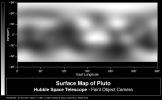
|
-
PIA00826:
-
Map of Pluto's Surface
Full Resolution:
TIFF
(1.149 MB)
JPEG
(231.7 kB)
|

|
1998-03-26 |
Europa
|
Galileo
|
Solid-State Imaging
|
2000x1350x3 |
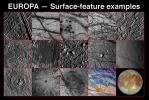
|
-
PIA00746:
-
Various Landscapes and Features on Europa
Full Resolution:
TIFF
(3.904 MB)
JPEG
(570.9 kB)
|

|
1998-03-26 |
Io
|
Galileo
|
Near Infrared Mapping Spectrometer
|
2200x1700x3 |
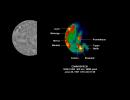
|
-
PIA00899:
-
New Hot Spot on Io Discovered by NIMS During Orbit C9
Full Resolution:
TIFF
(783.9 kB)
JPEG
(130.5 kB)
|

|
1998-03-26 |
J Rings
|
Galileo
|
Solid-State Imaging
|
1151x800x3 |
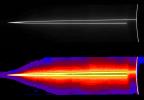
|
-
PIA00701:
-
Jupiter's Main Ring/Ring Halo
Full Resolution:
TIFF
(281.3 kB)
JPEG
(62.93 kB)
|

|
1998-03-26 |
J Rings
|
Galileo
|
Solid-State Imaging
|
1152x376x3 |

|
-
PIA00658:
-
Jupiter's Ring Halo
Full Resolution:
TIFF
(52.69 kB)
JPEG
(44.59 kB)
|

|
1998-03-26 |
J Rings
|
Galileo
|
Solid-State Imaging
|
800x410x1 |
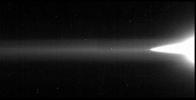
|
-
PIA00659:
-
Jupiter's Gossamer Ring
Full Resolution:
TIFF
(162.3 kB)
JPEG
(17.35 kB)
|

|
1998-03-26 |
J Rings
|
Galileo
|
Solid-State Imaging
|
1493x487x1 |

|
-
PIA00657:
-
Jupiter's Main Ring
Full Resolution:
TIFF
(107.1 kB)
JPEG
(21.63 kB)
|

|
1998-03-02 |
Europa
|
Galileo
|
Solid-State Imaging
|
733x406x3 |
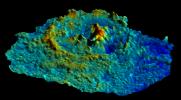
|
-
PIA01175:
-
Pwyll Impact Crater: Perspective View of Topographic Model
Full Resolution:
TIFF
(568.2 kB)
JPEG
(46.53 kB)
|

|
1997-12-18 |
Io
|
Galileo
|
Solid-State Imaging
|
1817x1817x3 |
![Io, the most volcanic body in the solar system is seen in the highest resolution obtained to date [Sept.7 & Nov. 6, 1996] by NASA's Galileo spacecraft.](/thumb/PIA00583.jpg)
|
-
PIA00583:
-
High Resolution Global View of Io
Full Resolution:
TIFF
(9.084 MB)
JPEG
(400.9 kB)
|

|
1997-11-18 |
Callisto
|
Galileo
|
Solid-State Imaging
|
1870x635x3 |
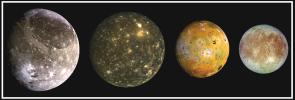
|
-
PIA00601:
-
The Galilean Satellites
Full Resolution:
TIFF
(2.108 MB)
JPEG
(144.1 kB)
|

|
1997-11-18 |
Jupiter
|
Galileo
|
Solid-State Imaging
|
1053x1491x3 |

|
-
PIA00600:
-
Family Portrait of Jupiter's Great Red Spot and the Galilean Satellites
Full Resolution:
TIFF
(2.21 MB)
JPEG
(112.7 kB)
|

|
1997-11-18 |
Ganymede
|
Galileo
|
Solid-State Imaging
|
400x400x1 |
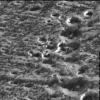
|
-
PIA00496:
-
Ice-frosted crater tops on Ganymede
Full Resolution:
TIFF
(162.4 kB)
JPEG
(31.02 kB)
|

|
1997-11-18 |
Io
|
Galileo
|
Solid-State Imaging
|
798x787x3 |
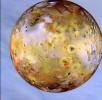
|
-
PIA00494:
-
Io in front of Jupiter
Full Resolution:
TIFF
(2.13 MB)
JPEG
(88.84 kB)
|

|
1997-01-15 |
|
|
|
1930x2440x3 |

|
-
PIA00545:
-
Solar System Montage
Full Resolution:
TIFF
(9.644 MB)
JPEG
(250.5 kB)
|

|
1996-11-26 |
Venus
|
Magellan
|
Imaging Radar
|
10240x10240x1 |

|
-
PIA00478:
-
Venus - Global View Centered at 180 degrees
Full Resolution:
TIFF
(44.9 MB)
JPEG
(8.515 MB)
|

|
1996-11-16 |
Io
|
Voyager
|
VG ISS - Narrow Angle
|
325x400x1 |

|
-
PIA00373:
-
Io - Volcanic Eruption
Full Resolution:
TIFF
(66.68 kB)
JPEG
(11.83 kB)
|

|
1996-11-16 |
Io
|
Voyager
|
VG ISS - Narrow Angle
|
220x300x1 |

|
-
PIA00374:
-
Io - One of at Least Four Simultaneous Erupting Volcanic Eruptions
Full Resolution:
TIFF
(25.26 kB)
JPEG
(4.047 kB)
|

|
1996-11-13 |
Jupiter
|
Voyager
|
VG ISS - Narrow Angle
|
850x575x3 |
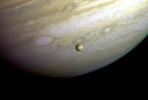
|
-
PIA00371:
-
Jupiter - Io In Front of Jupiter's Turbulent Clouds
Full Resolution:
TIFF
(797.6 kB)
JPEG
(28.95 kB)
|

|
1996-11-12 |
Venus
|
Magellan
|
Imaging Radar
|
4000x3000x3 |
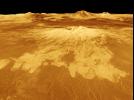
|
-
PIA00107:
-
Venus - 3-D Perspective View of Sapas Mons
Full Resolution:
TIFF
(6.277 MB)
JPEG
(1.445 MB)
|

|
1996-11-12 |
Venus
|
Magellan
|
Imaging Radar
|
4096x4096x3 |
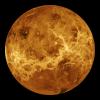
|
-
PIA00104:
-
Venus - Computer Simulated Global View Centered at 180 Degrees East Longitude
Full Resolution:
TIFF
(8.169 MB)
JPEG
(1.681 MB)
|

|
1996-09-30 |
Venus
|
Magellan
|
Imaging Radar
|
6519x6258x3 |
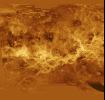
|
-
PIA00256:
-
Venus - Simple Cylindrical Map of Surface (Eastern Half)
Full Resolution:
TIFF
(24.03 MB)
JPEG
(4.955 MB)
|

|
1996-09-30 |
Venus
|
Magellan
|
Imaging Radar
|
6519x6258x3 |
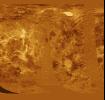
|
-
PIA00255:
-
Venus - Simple Cylindrical Map of Surface (Western Half)
Full Resolution:
TIFF
(21.83 MB)
JPEG
(4.354 MB)
|

|
1996-09-26 |
Venus
|
Magellan
|
Imaging Radar
|
3640x2213x1 |

|
-
PIA00465:
-
Venus - Comparison of Venera and Magellan Resolutions
Full Resolution:
TIFF
(5.626 MB)
JPEG
(1.445 MB)
|

|
1996-09-23 |
Venus
|
Magellan
|
Imaging Radar
|
4096x4096x3 |
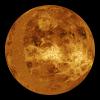
|
-
PIA00270:
-
Venus - Computer Simulated Global View Centered at 90 Degrees East Longitude
Full Resolution:
TIFF
(7.793 MB)
JPEG
(1.615 MB)
|

|
1996-09-13 |
Earth
|
Voyager
|
VG ISS - Narrow Angle
|
620x500x3 |
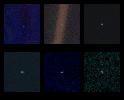
|
-
PIA00453:
-
Solar System Portrait - Views of 6 Planets
Full Resolution:
TIFF
(530.3 kB)
JPEG
(33.82 kB)
|

|
1996-09-13 |
Sol (our sun)
|
Voyager
|
VG ISS - Wide Angle
|
4000x1200x3 |

|
-
PIA00451:
-
Solar System Portrait - 60 Frame Mosaic
Full Resolution:
TIFF
(1.124 MB)
JPEG
(166.4 kB)
|

|
1996-09-13 |
Sol (our sun)
|
Voyager
|
VG ISS - Wide Angle
|
3430x2650x3 |
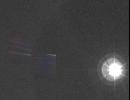
|
-
PIA00450:
-
Solar System Portrait - View of the Sun, Earth and Venus
Full Resolution:
TIFF
(8.676 MB)
JPEG
(515.8 kB)
|

|
1996-09-12 |
Dactyl
|
Galileo
|
Solid-State Imaging
|
700x700x1 |
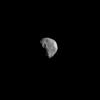
|
-
PIA00297:
-
High Resolution View of Dactyl
Full Resolution:
TIFF
(22.07 kB)
JPEG
(7.709 kB)
|

|
1996-09-12 |
Earth
|
Voyager
|
VG ISS - Narrow Angle
|
453x614x3 |

|
-
PIA00452:
-
Solar System Portrait - Earth as 'Pale Blue Dot'
Full Resolution:
TIFF
(698 kB)
JPEG
(30.18 kB)
|

|
1996-08-01 |
Venus
|
Magellan
|
Imaging Radar
|
4000x3000x3 |
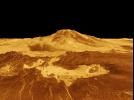
|
-
PIA00106:
-
Venus - 3-D Perspective View of Maat Mons
Full Resolution:
TIFF
(4.791 MB)
JPEG
(1.141 MB)
|

|
1996-07-19 |
Venus
|
Magellan
|
Imaging Radar
|
4096x5120x3 |

|
-
PIA00272:
-
Venus - Simulated Color of Ushas Mons
Full Resolution:
TIFF
(18.64 MB)
JPEG
(5.424 MB)
|

|
1996-07-18 |
Venus
|
Magellan
|
Imaging Radar
|
4096x4096x3 |
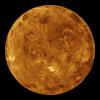
|
-
PIA00271:
-
Venus - Computer Simulated Global View of the Northern Hemisphere
Full Resolution:
TIFF
(8.283 MB)
JPEG
(1.764 MB)
|

|
1996-06-06 |
Ganymede
|
Galileo
|
Solid-State Imaging
|
825x825x1 |

|
-
PIA00273:
-
Optical Navigation Image of Ganymede
Full Resolution:
TIFF
(6.779 kB)
JPEG
(9.291 kB)
|

|
1996-03-14 |
Venus
|
Magellan
|
Imaging Radar
|
1600x1200x3 |
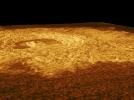
|
-
PIA00266:
-
Venus - Oblique View of Crater Riley
Full Resolution:
TIFF
(862.1 kB)
JPEG
(214.2 kB)
|

|
1996-03-14 |
Venus
|
Magellan
|
Imaging Radar
|
4096x4096x3 |
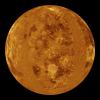
|
-
PIA00257:
-
Venus - Computer Simulated Global View Centered at 0 Degrees East Longitude
Full Resolution:
TIFF
(6.884 MB)
JPEG
(1.366 MB)
|

|
1996-03-14 |
Venus
|
Magellan
|
Imaging Radar
|
1280x1024x1 |
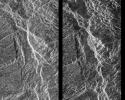
|
-
PIA00248:
-
Venus - Aphrodite Terra
Full Resolution:
TIFF
(797.9 kB)
JPEG
(294.6 kB)
|

|
1996-03-13 |
Venus
|
Magellan
|
Imaging Radar
|
2048x2048x1 |
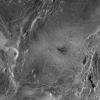
|
-
PIA00245:
-
Venus - 600 Kilometer Segment of Longest Channel on Venus
Full Resolution:
TIFF
(3.233 MB)
JPEG
(1.415 MB)
|

|
1996-01-29 |
Triton
|
Voyager
|
|
1000x1000x1 |
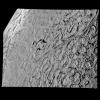
|
-
PIA00061:
-
Triton High Resolution View of Northern Hemisphere
Full Resolution:
TIFF
(565.5 kB)
JPEG
(131.8 kB)
|

|
1996-01-29 |
Io
|
Voyager
|
VG ISS - Narrow Angle
|
1000x1000x3 |
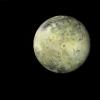
|
-
PIA00023:
-
Io - Full Disk
Full Resolution:
TIFF
(1.21 MB)
JPEG
(40.95 kB)
|

|
1989-10-27 |
Triton
|
Voyager
|
|
900x1558x1 |

|
-
PIA14449:
-
Triton's Volcanic Plumes
Full Resolution:
TIFF
(1.404 MB)
JPEG
(191.5 kB)
|

|
1986-03-14 |
Comet
|
|
|
1836x961x3 |
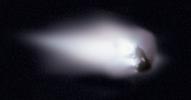
|
-
PIA17485:
-
Comet Halley
Full Resolution:
TIFF
(5.295 MB)
JPEG
(160.2 kB)
|

 Planetary Data System
Planetary Data System

































![Io, the most volcanic body in the solar system is seen in the highest resolution obtained to date [Sept.7 & Nov. 6, 1996] by NASA's Galileo spacecraft.](/thumb/PIA00583.jpg)

































